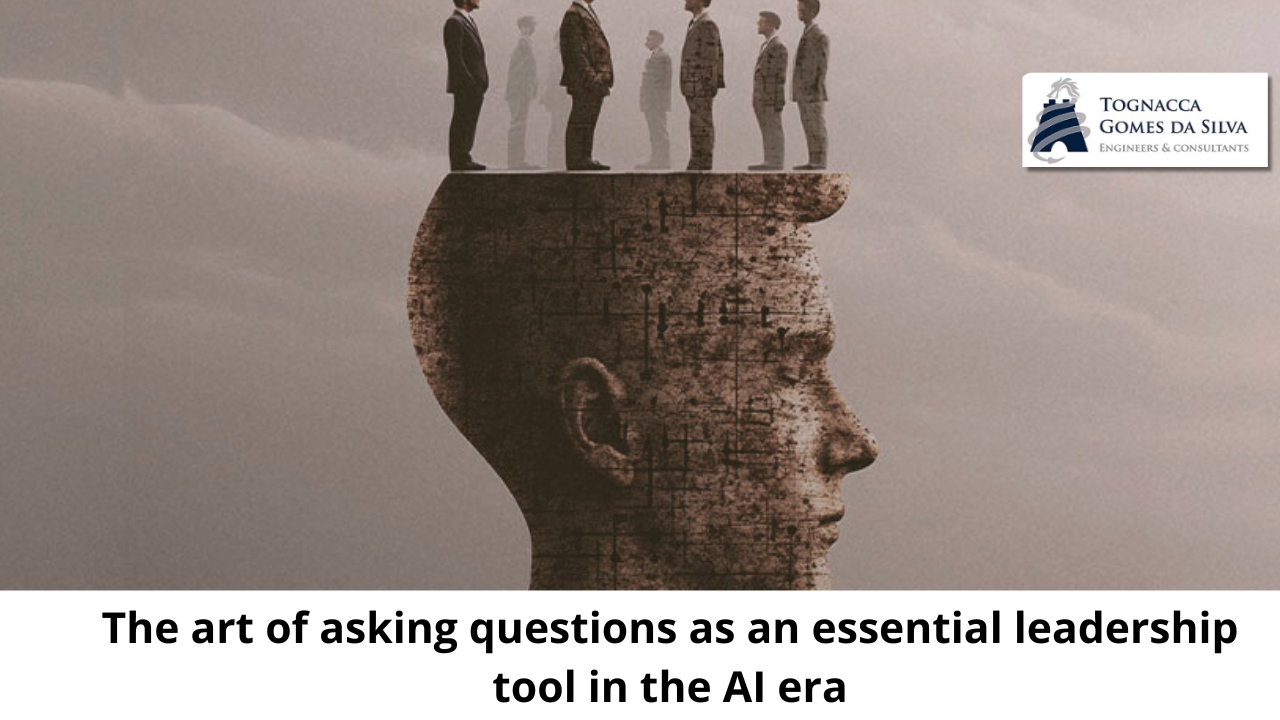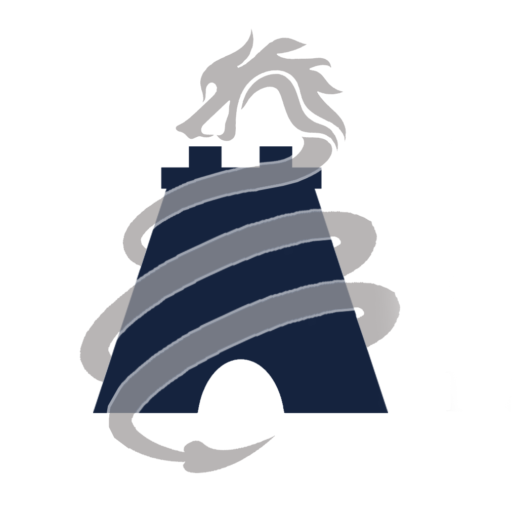In a world where information is increasingly accessible, the real competitive advantage lies not in what we know, but in what we ask. In this context, Leadership Prompting is the ability to ask strategic questions that challenge assumptions, stimulate innovation, and extract the best from both human teams and AI tools.
In a recent interview with the New York Times, Jensen Huang, CEO and founder of NVIDIA, revealed a key aspect of his leadership style: “Today, I give fewer answers and ask many more questions. By asking questions, I force my management team to explore ideas they would otherwise never consider.”
This approach reflects a fundamental principle of leadership in the digital age: the ability to ask strategic questions can be more valuable than providing ready-made answers. This concept can be defined as Leadership Prompting – an application of the prompting technique, widely used in the field of Artificial Intelligence.
In AI, prompting refers to the act of providing structured input to direct a model’s response. This input can take the form of a question, a command, or a statement that sets the context and parameters for the interaction. In the context of leadership, this same principle applies: the quality of the questions determines the depth of the answers—whether from a team or an AI system.
A classic example occurred in the 1980s, with the popularization of calculators. Until then, performing complex calculations was a skill restricted to math experts. However, with the advancement of these tools, people without advanced training began to obtain results that were as accurate as—or even superior to—those of experienced mathematicians.
This impact was demonstrated as early as 1989 by the National Council of Teachers of Mathematics (NCTM). Their study Curriculum and Evaluation Standards for School Mathematics showed that students who used calculators frequently did not perform worse in arithmetic skills than those who avoided these tools—in many cases, they performed better.
In the context of leadership, Leadership Prompting involves, above all, the ability to instigate deep reflection and catalyze strategic changes within teams. As Jensen Huang pointed out, this approach challenges managers to explore new ideas and question previously accepted assumptions without question.
This method goes back to a classic principle of critical thinking: strategic questioning as a tool for transformation. Just as Socrates, more than two thousand years ago, challenged established beliefs through maieutics, Leadership Prompting encourages leaders to confront outdated views and reevaluate paradigms that may have become obsolete in the face of the rapid pace of technological innovations.
In this scenario, the ability to ask the right questions becomes a competitive advantage. Jane Fraser, CEO of Citi, reinforces this idea when she states in an interview with Fortune: “In the world of AI, access to information has become a commodity. The real differentiator now lies in the ability to formulate good prompts.”
This transformation is not limited to mathematics – AI has democratized access to knowledge, making information a commodity. Today, an employee without a legal background can quickly obtain detailed insights into complex regulations, such as data privacy, with greater accuracy than a generalist lawyer. Similarly, a marketer without design experience can create sophisticated visuals using tools like Midjourney, achieving results comparable to – or even superior to – those of an experienced designer, provided they know how to guide AI correctly.
While technical knowledge has become widely accessible, the real competitive advantage lies in the ability to use these tools strategically. In this context, prompting stands out as the key skill to maximize the potential of AI.
A study published in 2024 in Computers and Education: Artificial Intelligence, entitled “AI Literacy and Its Implications for Prompt Engineering Strategies”, by Nils Knoth, Antonia Tolzin, Andreas Janson and Jan Marco Leimeister, advocates the inclusion of prompting teaching in schools as part of preparation for the job market of the future.
Despite its direct impact on decision-making and innovation, the art of asking strategic questions is still underestimated in the training of business leaders. In contrast, areas such as law and medicine depend on structured questioning to diagnose problems, interpret complex scenarios and guide actions effectively.
This gap was highlighted in the study “The Surprising Power of Questions”, published in the Harvard Business Review (2018), which highlights how the ability to ask the right questions can generate significant impacts on communication, relationship building and innovation within organizations.
This can already be seen in practical examples. Based on the work of psychologist Carol Dweck, Microsoft CEO Satya Nadella adopted a management model that sees well-founded questions as the main factor for continuous learning and the expansion of skills. Another paradigm is Toyota’s 5 Whys technique. Developed by the brand’s founder, Sakichi Toyoda, the strategy consists of asking successive questions starting with “why?”, seeking to identify the root of a problem and find more effective solutions. The approach allows teams to solve problems quickly, without having to analyze several variables at the same time. It is important to note that the method was incorporated into the ISO 9001 standard, consolidating itself as one of the pillars of quality management.
In this scenario, improving Leadership Prompting skills requires a structured approach. To achieve this, it is essential to master three fundamental steps:
1. Abandon your ego and expand your repertoire of questions
The first step to improving Leadership Prompting is to cultivate a mindset of constant curiosity. Studies show that children ask significantly more questions than adults, as they use questioning as an essential tool for understanding the world. According to the research “Children’s Questions: A Mechanism for Cognitive Development”, by Michel Chouinard, this habit boosts cognitive development and active learning.
However, as adults grow older, they tend to become entrenched in rigid beliefs, reducing their willingness to question and explore new ideas. To strengthen Leadership Prompting, it is essential to replace the need to have all the answers with the willingness to ask more and better questions. The greater the volume and quality of questioning, the greater the ability to challenge assumptions, stimulate innovation and expand perspectives within organizations.
2. Apply thought experiments to stimulate innovation
One of the most effective ways to expand strategic thinking and challenge assumptions is to use thought experiments. These intellectual exercises – known as thought experiments – involve formulating hypothetical scenarios to test ideas, assess consequences and discover new approaches before even putting them into practice. In the business world, this technique has been widely used by innovative leaders, such as Tony Hsieh, former CEO of Zappos, who encouraged his team to explore possibilities by asking provocative questions. Many of these questions seemed, at first glance, irrelevant or absurd – but it was precisely these provocations that led to disruptive insights. Classic examples include:
– What would we do differently if we had an infinite budget?
– How are our customers using our product in unexpected ways?
The power of thought experiments lies precisely in this: by questioning traditional assumptions and exploring different scenarios, leaders can unlock new ways to innovate and differentiate themselves in the market.
3. Specify the context for more precise questions
The effectiveness of a question depends not only on what is asked, but also on how and when it is asked. A study from Cornell University, entitled “It Is Not About What You Say, It Is About How You Say It: A Surprisingly Simple Approach for Improving Reading Comprehension”, conducted by Sagi Shaier, Lawrence E. Hunter and Katharina von der Wense, reinforces this idea. The research analyzed how the order and emphasis of inputs – specifically the sequence between context and question – influence the performance of natural language-based AI models (LLMs) in text comprehension tasks.
One of the main conclusions of the study is that presenting context before the question can increase the accuracy of the answer by up to 31%. This finding, however, is not limited to interaction with AI, but also applies to human communication. Vague or context-free questions often result in inaccurate answers, while well-structured, contextualized and direct questions lead to more relevant insights and more assertive decisions.
For example, instead of simply asking “How can we improve our strategy?” a more effective approach would be: “Given recent market trends, what strategic adjustments should we prioritize in the next six months to increase our competitiveness?”
By structuring questions with a clear and relevant context, leaders not only improve the quality of the responses they get from their teams, but they also optimize the use of AI tools, making interactions more efficient and strategic.
Mastering Leadership Prompting is a powerful differentiator, but it is not enough on its own. True competitive advantage comes from the combination of strategic questioning and sharp critical thinking. After all, there is no point in formulating good questions if we do not know how to evaluate the quality of the responses – whether coming from a team or generated by an AI system.
This point is highlighted by Po-Shen Loh, a professor at Carnegie Mellon University, who, in an interview, made a provocative observation about the impact of the digital age on learning:
“People used to go to school to learn how to do homework. Today, everyone needs to learn how to correct and review homework.”
In practice, this means that, with the proliferation of AI-based tools, the role of the leader is not just to consume information, but to interpret, question and validate those responses.
However, one aspect remains essential: the need to constantly evaluate the quality of responses. In a scenario where Artificial Intelligence is still far from perfect, success depends not only on knowing how to ask questions, but on knowing how to interpret and validate each response received.
( fonte: MIT Technology Review)



